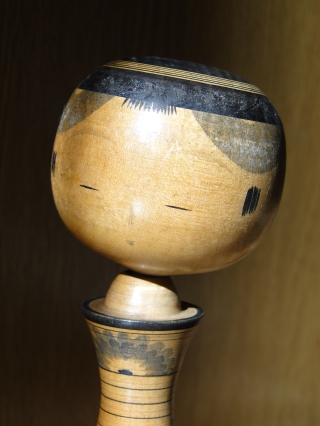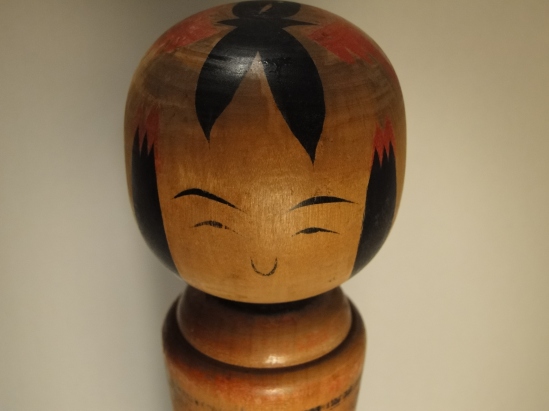Traditional kokeshi ningyo are Japanese dolls with a colourful history and controversial reputation.
They have been associated with miscarried babies and infanticide. They were guardians of children and keepers of their souls. Today, the word kokeshi is even used as a sexual innuendo.
Kokeshi were originally souvenirs for Japanese tourists and offered entertainment to children. However, they developed into something much more. The dolls are fascinating, shocking, sad or mundane depending on the perspective.
During the Edo period, kokeshi were the guardians of children and keepers of their souls. The dolls would watch over their child owners as they grew up and keep them from harm.
Naruko type kokeshi have a head which can be twisted to create a squeaking sound to imitate a child crying. The dolls were perhaps images of the children themselves.
On coming of age, as the child grew into adulthood, the young soul would enter the doll and the adult soul would continue on. The ritual burning of the figure ensured the soul was freed and carried by the smoke back to the mountain from whence it came. For this reason, antique kokeshi from the Edo period are extremely rare.
Perhaps the idea that a child’s soul could be carried in a doll provided some solace for mothers who miscarried. Displaying a doll in the household shrine along side photos of other passed relatives would ensure the child was not forgotten.
It is possible to separate the word kokeshi into two parts: ko (child) and keshi (a conjugation of the verb kesu meaning erase). This led to the speculation that the figures could have been used as memorial objects for women who, in times of great hardship, had to resort to infanticide. In Japan’s history, infanticide has been known in times of extreme poverty.
In fact, the etymology of the word has nothing to do with ‘erasing’ children at all, but is the company name of a manufacturer. Despite this, the idea of kokeshi as symbols of lost children rose in popularity during the 1960s when abortion became more accessible and a contentious issue in Japan.
Something which started as a commercial fad and children’s toy eventually evolved into something symbolic.
Although, these days they are not as popular as they once were among Japanese.
If I bring up the topic of ‘kokeshi’ the younger generation usually respond with a smirk. I was surprised to learn that these days, it is a common euphemism for a sex toy.
Also, the most popular hot spring souvenir nowadays is probably sweets.
Kokeshi are more likely to be found in antique fairs or flea markets and are objects for collectors.
I usually stock a few in my shop. Stop by and take a look.







August 19th, 2011 at 6:11 am
[…] https://furugistarjapan.wordpress.com/2011/01/24/japanese-kokeshi-dolls-more-than-a-pretty-face/#more… dan beberapa sumber […]
February 1st, 2013 at 7:47 pm
interesting. i had considered developing my own “kokeshi” type dolls. After reading i may have to really think about it. i want something that represents Japan or maybe just asian culture in general with some connection with anime/manga
August 5th, 2014 at 2:22 pm
[…] was meant to be. I found her at a shrine sale in Tokyo and because I collect vintage hanko and kokeshi dolls, I had to have her. […]
October 10th, 2014 at 4:55 am
[…] doll. Full of enigmatic charm, this is an original gift for the culturally curious. Do you know the story behind […]
October 31st, 2016 at 8:06 pm
thank you.
May 12th, 2017 at 12:17 pm
[…] https://furugistarjapan.wordpress.com/2011/01/24/japanese-kokeshi-dolls-more-than-a-pretty-face/ […]
February 28th, 2018 at 7:17 am
I did not understand the meaning if this: In fact, the etymology of the word has nothing to do with ‘erasing’ children at all, but is the company name of a manufacturer.
Could you, please clarify?
February 28th, 2018 at 12:42 pm
This passage refers to previous passage which includes: It is possible to separate the word kokeshi into two parts: ko (child) and keshi (a conjugation of the verb kesu meaning erase).
The etymology of the word can not be pinned down but at the time of writing I believe I read a manufacturer used this name. Usually they are hand made. It has nothing to do with the above, but culturally became associated with that idea.
February 28th, 2018 at 10:48 pm
Thank you, now it is a bit clearer. Will try to find more information.